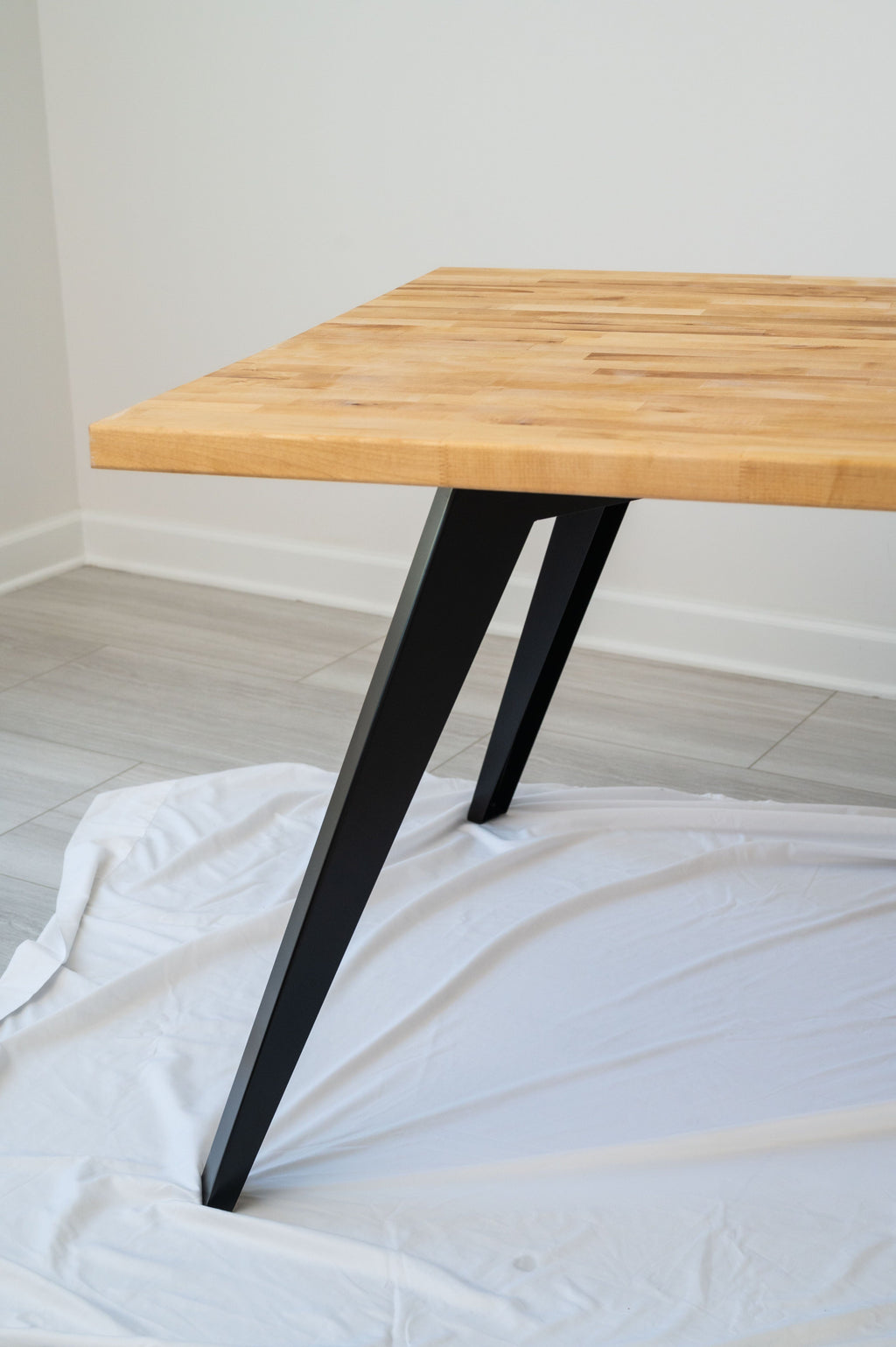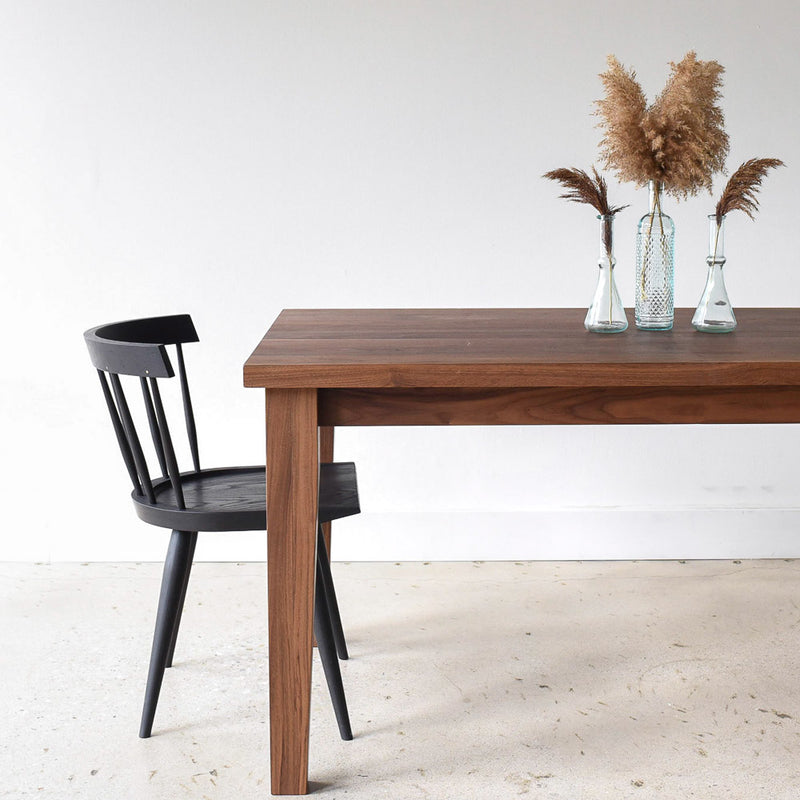Bring Warmth and Personality to Your Space with Dining Table Legs Wood
Bring Warmth and Personality to Your Space with Dining Table Legs Wood
Blog Article
What to Consider When Picking Dining Table Legs Wood for Your Home.
When picking wood for dining table legs, a number of critical variables require careful factor to consider to guarantee both performance and aesthetic appeal. The type of wood picked can dramatically affect the table's longevity, stability, and total design, while the upkeep requirements might affect long-lasting use.

Significance of Wood Type
When choosing table legs, the choice of timber kind plays a critical function in establishing both aesthetic appeals and sturdiness. Different wood varieties use varying levels of weight, resistance, and stamina to put on, which can dramatically influence the capability and longevity of the table. Woods such as cherry, maple, and oak are often liked for their robust nature and capability to stand up to everyday use. These woods not just give architectural integrity yet also resist dents and scratches much better than softer choices.
Conversely, softer woods like poplar or yearn, while extra economical, might not supply the exact same degree of sturdiness and may require even more frequent upkeep or substitute. The wood kind additionally affects the table's capability to endure ecological aspects such as humidity and temperature level fluctuations. Moreover, the selection of timber can influence the ease of tarnishing and ending up, which can be important for achieving the preferred look.
Visual Factors To Consider
The aesthetic charm of eating table legs dramatically adds to the overall aesthetic of the eating space. Dining Table Legs Wood. When selecting wood for dining table legs, the grain pattern, shade, and coating are pivotal components that can enhance or take away from the room's style. Various wood types display varying textures and shades; for example, oak presents a timeless look with popular grain, while walnut offers a rich, dark beauty
Additionally, the form of the legs plays an essential function in defining the table's personality. Sleek, minimalist legs can create a contemporary feel, while more ornate, turned legs stimulate standard charm. The design of the legs need to balance with existing furniture and the overall theme of the space, whether it be rustic, modern, or transitional.
It is additionally crucial to consider just how the legs interact with various other furnishings items, consisting of sideboards and chairs. A natural style not only elevates the eating experience but likewise contributes to the home's general aesthetic coherence. Inevitably, the choice of dining table legs need to be a thoughtful decision that reflects personal taste while guaranteeing aesthetic harmony within the area.

Resilience and Stability
Resilience and stability are crucial consider the choice of table legs, as they straight affect the durability and safety of the furnishings. When choosing timber for dining table legs, one should take into consideration the integral properties of numerous wood types. Hardwoods, such as oak, cherry, and maple, are often liked for their stamina and resistance to use, making them appropriate for high-traffic eating areas.
Along with the type of wood, the construction technique also plays a substantial function in the general stability of the table. Legs that are well built, either through conventional joinery techniques or modern-day engineering methods, will certainly provide improved support and prevent wobbling. It is important to examine the thickness and style of the legs; thicker legs are normally much more steady and can hold up against better weight.
In addition, the environmental problems in which the table will be used can affect toughness. Timber that has been effectively treated for dampness resistance will certainly carry out better in damp settings. Ultimately, selecting the ideal mix of durable wood and stable building will certainly make sure that your table continues to be a practical and safe focal point in your house for years to find.
Maintenance Demands
Selecting dining table legs made from sturdy timber is just the beginning; recognizing maintenance needs is equally vital to protect their appearance and functionality. Different wood types require varying degrees of care, so it is necessary to recognize what is required for your details choice.
Normal cleansing is essential; use a soft, damp cloth to get rid of dirt and debris. Prevent rough chemicals that can harm the surface. For wood surfaces like varnish or lacquer, routine polishing with furniture wax can boost luster and provide a safety layer against scratches.
Preventative steps are crucial as well. Use rollercoasters and placemats to stay clear of straight call with damp or hot items, which can warp or tarnish the timber. Furthermore, take into consideration placing really felt pads under the legs to stop scratches on your flooring and reduce use on the wood
Humidity control is an additional considerable aspect; preserving a steady setting aids to stop bending and splitting. If your eating location is vulnerable to fluctuations in temperature level and moisture, think about making use of a humidifier or dehumidifier as necessary.
Budget Plan and Price Elements
When preparing to buy table legs, comprehending budget and cost aspects is essential to make a notified choice. The type of timber picked for the legs significantly influences the overall cost. Woods, such as oak or walnut, often tend pop over here to be a lot more pricey than softwoods like want, due to their sturdiness, aesthetic appeal, and scarcity. In addition, think about whether you are buying pre-made legs or choosing for personalized styles, as customization usually incurs greater prices.
Labor and workmanship additionally play a crucial function in the general expenditure. Handmade or artisan-crafted legs may lug a premium cost, reflecting the ability and time purchased their production. It's critical to examine the balance between high quality and price; investing more in advance can cause a longer-lasting item that calls for much less maintenance in time.
Final Thought
In recap, picking the appropriate wood for eating table legs demands mindful factor to other consider of different factors, consisting of timber type, aesthetic allure, maintenance, longevity, and budget plan restrictions. The option of hardwoods such as oak and maple can boost both strength and aesthetic allure, while softer timbers may be much more economical but much less enduring. Ultimately, a well-informed choice pertaining to product selection will certainly add to the total capability and durability of the dining table, ensuring a beneficial financial investment for the home.
When choosing wood for eating table legs, a number of crucial variables call for careful factor to consider to make certain both functionality and visual charm.When picking eating table legs, the option of wood kind plays a crucial function in establishing both looks and toughness. When choosing timber for eating official site table legs, the grain surface, color, and pattern are pivotal components that can boost or detract from the room's design. When choosing wood for eating table legs, one need to consider the intrinsic residential or commercial properties of different timber kinds.In recap, selecting the ideal timber for dining table legs requires mindful consideration of numerous elements, consisting of wood kind, aesthetic charm, maintenance, resilience, and budget restrictions.
Report this page